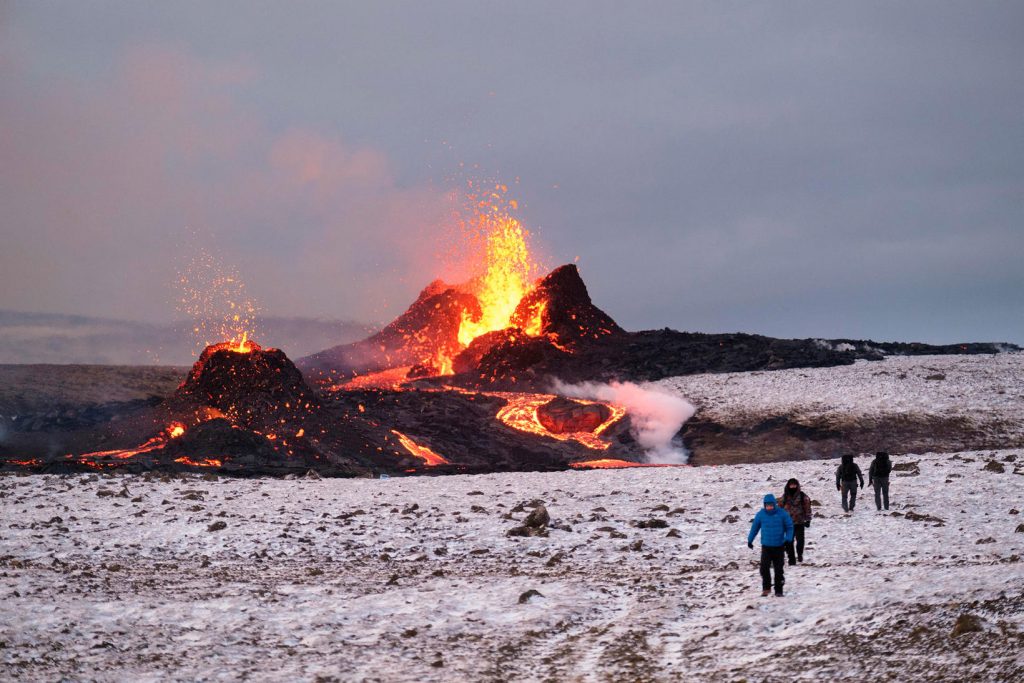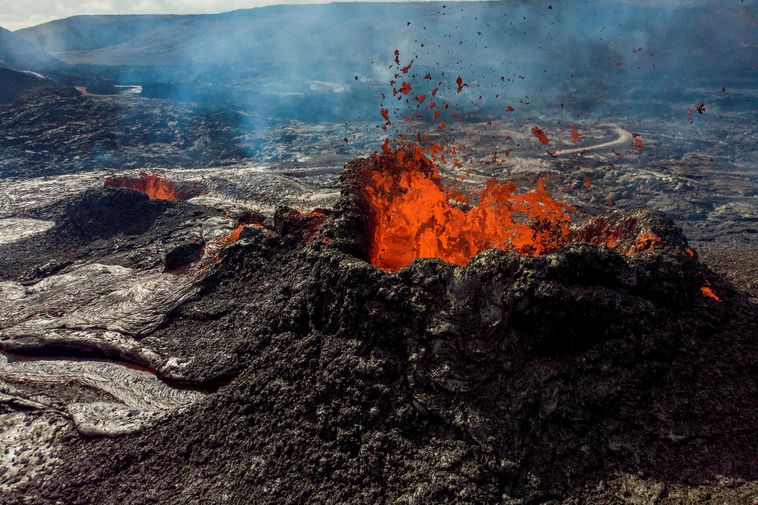The Volcanic Eruption at Fagradalsfjall
Fagradalsfjall is a mountain located in the Geldingadalir valley on the Reykjanes Peninsula in the south of Iceland.
It is classified as a tuya, which is a steep volcano that is flattened on the top, formed when lava erupts under a glacier or ice sheet. Fagradalsfjall has been dormant for roughly 6,000 years, but is now active again as a shield volcano eruption. The Reykjanes peninsula is part of a volcanic system. The last eruption on the peninsula was roughly 800 years ago when an eruption event occurred in the 13th century. This eruption at Valahnúkur lasted from 1210-1240. The current eruption event is not the formation of a new volcano, but instead fissure eruptions and large amounts of lava flow escaping from beneath the earth. This area has over 50,000 earthquakes in the weeks before the eruption began on March 19th, 2021. The eruption is being called Geldingadalsgos (Geldingadalur eruption).
As of April 14th, eight additional fissures have opened around the original eruption site.
The original fissure eruption was between 500-700 meters long. It began to build up and break down spatter cones, which are mounds of cooled lava. The fifth and sixth fissures opened on April 13th, and two additional fissures were reported on the 14th. The lava continues to build spatter cones and lava flows continued into the Geldingadalir and Meradalir valleys. All of the openings appear to be along the same volcanic fissure and appear to have no impact on the lava flow. Additional fissures are expected to open and visitors are advised to take care. Scientists at the University of Iceland published data on April 12th that indicates that the lava covers a surface area of roughly 0.75 km/2. The lava output is estimated to be around 5-8 m3/s. The lava emerging from the eruption is believed to come from a magma reservoir in the mantle, roughly 17-20 km below the crust. The eruption site has released sulfur dioxide, carbon dioxide, and hydrogen fluoride. This gas pollution has been heavy around the eruption site during some days, causing the authorities to temporarily close for public safety.
The eruption site is proving to be a popular attraction for locals and tourists alike.
From the beginning of the eruption to April 13th the Icelandic Tourist Board reported that some 41,923 people had visited the eruption site. Videos and photos have been posted of people playing volleyball, cooking hot dogs and roasting marshmallows, and having picnics. There have also been proposals and even a wedding at the site! There are some potential dangers of high levels of gas pollution. Otherwise, Fagradalsfjall poses no immediate danger to surrounding areas as the eruption site is not near any roads or inhabited places. This is also a different type of eruption than Eyjafjallajökull in 2010, which released huge amounts of ash into the air causing massive flight interruptions across Europe. There is a small chance that the eruption could reach the roads if the lava flow continues at the same speed for the next several weeks.
You may not have heard of Fagradalsfjall before, but it is a place of significance in several ways.
Fagradalsfjall was the site of a plane crash on May 3rd, 1943. The crash killed fourteen people, including Lieutenant General Frank Maxwell Andrews. Andrews was a senior officer of the U.S. Army and one of the founders of the U.S. Air Force. The site was also the location for the famous Icelandic artist Björk‘s music video Black Lake, released in 2015. Fagradalsfjall is also suspected to be a significant archaeological site of a potential pre-Christian burial. Ísólfur at Ísólfsskáli, an early settler of Iceland, is said to have been buried there according to a place name register. An archaeologist was on site to attempt to determine if this area was actually a grave, but unfortunately was unable to confirm before the lava covered it.
Our head guide, Jonathan, visited the eruption site at the end of March. You can see his video here!

Fagradalsfjall Volcanic Eruption – mbl.is/Kristinn Magnússon

Lava at Fagradalsfjall – mbl.is/Kristinn Magnússon








